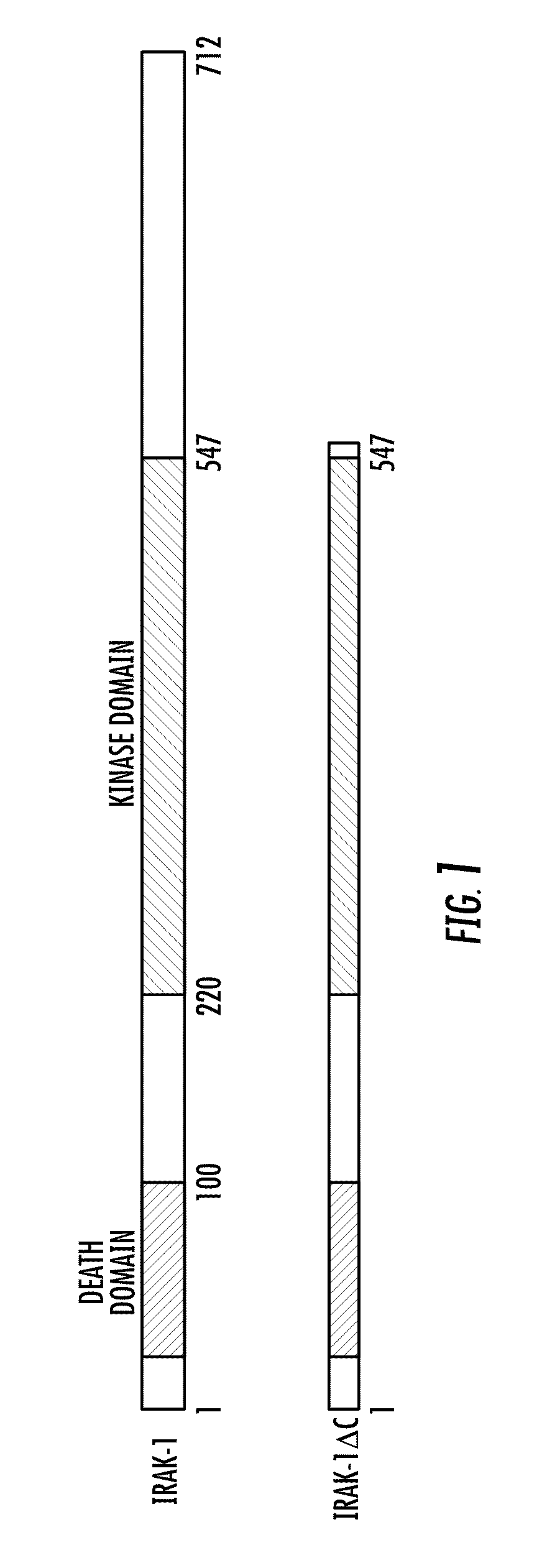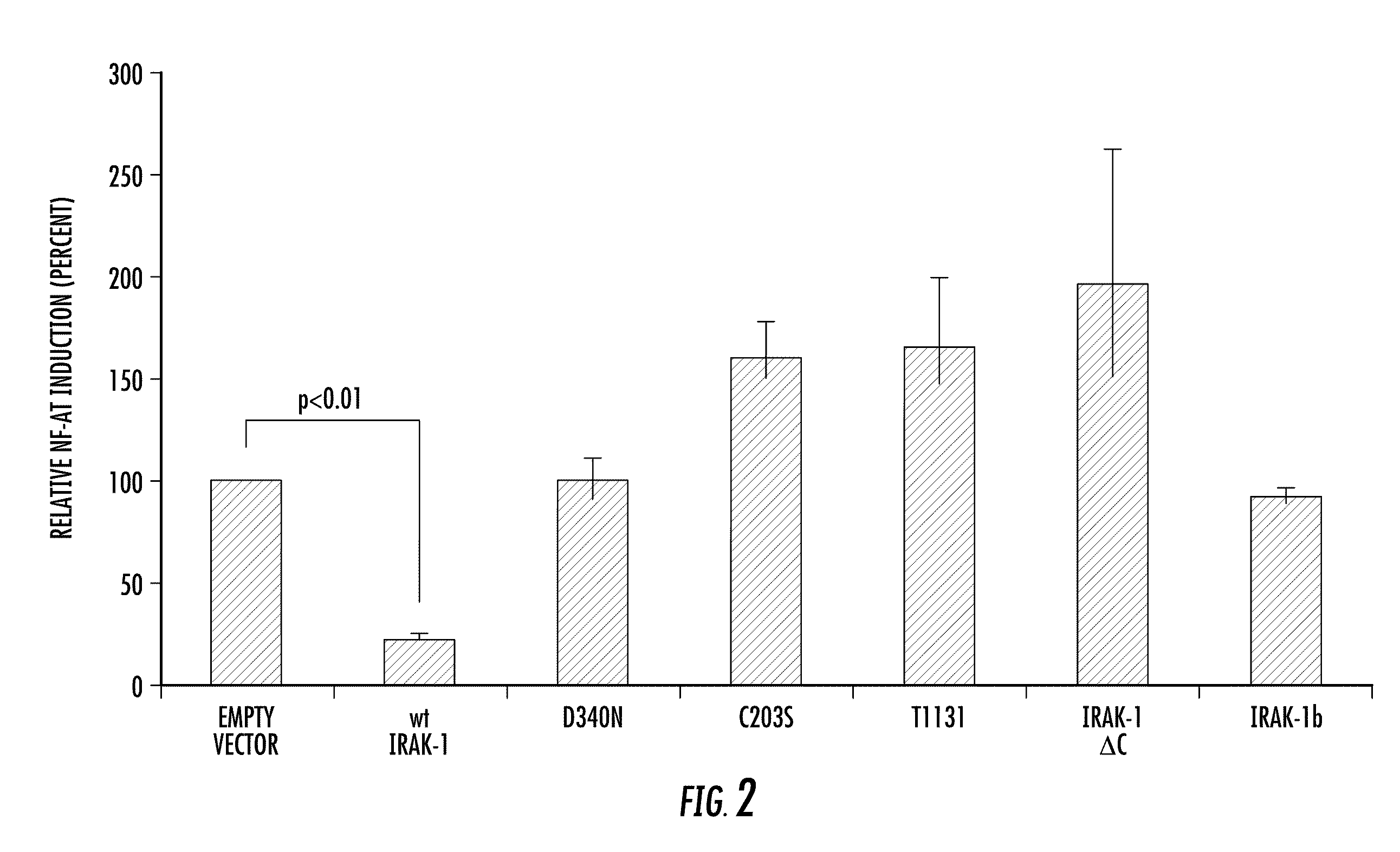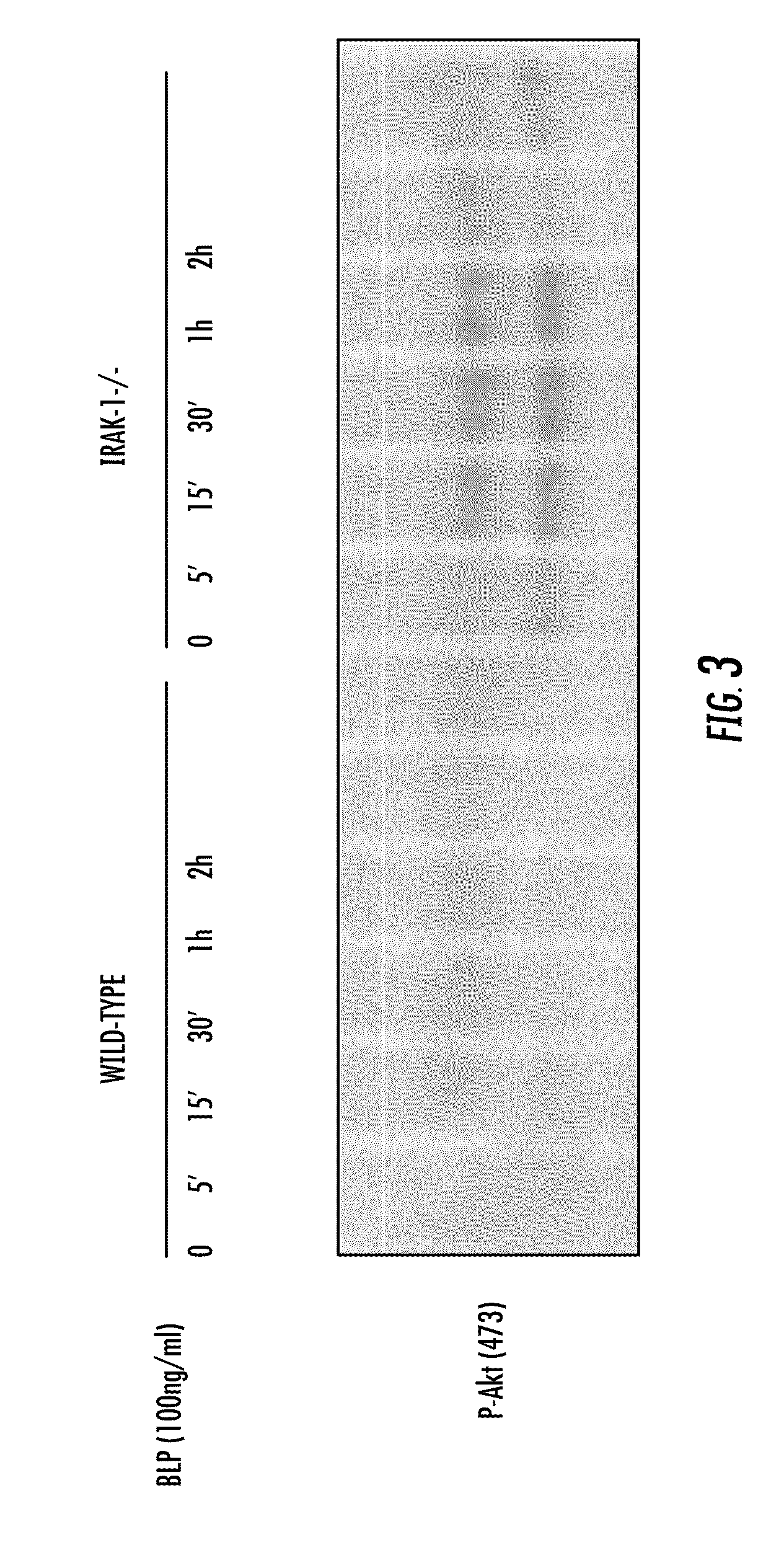Irak-1 as regulator of diseases and disorders
- Summary
- Abstract
- Description
- Claims
- Application Information
AI Technical Summary
Benefits of technology
Problems solved by technology
Method used
Image
Examples
example 1
Involvement of IRAK-1 with NFAT and Cardiovascular Disease
[0114]NFAT family transcription factors play critical roles in the pathogenesis of cardiovascular diseases, including hypertension and atherosclerosis. Because the inventor and his colleagues previously demonstrated that human IRAK-1 genetic variations are correlated with the risks of human cardiovascular diseases, contribution of IRAK-1 to the regulation of NFAT transcriptional activity was investigated. First, human Hela cells were trasfected with either empty vector plasmid or wild type IRAK-1 expression plasmid together with a NFAT responsive element-containing luciferase reporter plasmid. As can be seen from FIG. 2, introduction of a control empty plasmid and NFAT responsive element-containing luciferase plasmid led to the activation of the reporter luciferase activity, which is adjusted to 100% on the graph. As shown in FIG. 2, co-transfection of the wild type IRAK-1 expression plasmid with the NFAT-luciferase reporter ...
example 2
Involvement of IRAK-1 with Akt and Diabetes
[0117]Because Akt is a signaling molecule involved in regulating cellular metabolism, the activation status of Akt (as measured by the levels of its phosphorylation at Ser 473) in wild type and IRAK-1 deficient cells was investigated. Bone marrow derived macrophages (BMDM) were harvested from either wild type or IRAK-1 deficient mice. Equal amounts of BMDM (1×106 cells) were treated with 100 ng / ml Pam3CSK4 (BLP) for a time course (0, 5 min, 15 min, 30 min, 1 hr, and 2 hr). Cell lysates were harvested from each time point and separated by electrophoresis. The intensities of phosphorylated Akt at Serine 473 position were monitored through Western Blot using anti-phosphorylated Akt Serine 473 antibody. The data indicate that IRAK-1 is attenuating agonist-induced Akt phosphorylation. This might be achieved through IRAK-1 phosphorylation and inactivation of Akt upstream molecules such as IRS-1.
[0118]As can be seen from FIG. 3, IRAK-1 is involved...
example 3
Involvement of IRAK-1 with Tau and Neurodegenerative Diseases
[0119]The expression pattern of full length IRAK-1 molecule and its inactive isoform IRAK-1c in human brain tissues were studied. Proteins were extracted from brain tissues from anonymous donors collected from Wake Forest University Medical Center. Harvested proteins from various donors with different ages were separated by electrophoresis. The levels of full-length IRAK-1 were visualized by Western Blot using anti-IRAK-1 antibody. As shown in FIG. 4, the full length IRAK-1 protein is not present in brain samples collected from young donors (age 42 and 32). In contrast, the full length IRAK-1 form is present in aged brain tissues (aged 61, 72, 74, 79, 80, 82, and 83).
[0120]Because Tau phosphorylation is increased in aged human brains and contributes to the pathogenesis of various neurological diseases, such as Alzheimer's and Parkinson's diseases, studies were performed to ask whether the increased levels of full-length IR...
PUM
| Property | Measurement | Unit |
|---|---|---|
| Gene expression profile | aaaaa | aaaaa |
Abstract
Description
Claims
Application Information
 Login to View More
Login to View More - R&D
- Intellectual Property
- Life Sciences
- Materials
- Tech Scout
- Unparalleled Data Quality
- Higher Quality Content
- 60% Fewer Hallucinations
Browse by: Latest US Patents, China's latest patents, Technical Efficacy Thesaurus, Application Domain, Technology Topic, Popular Technical Reports.
© 2025 PatSnap. All rights reserved.Legal|Privacy policy|Modern Slavery Act Transparency Statement|Sitemap|About US| Contact US: help@patsnap.com



